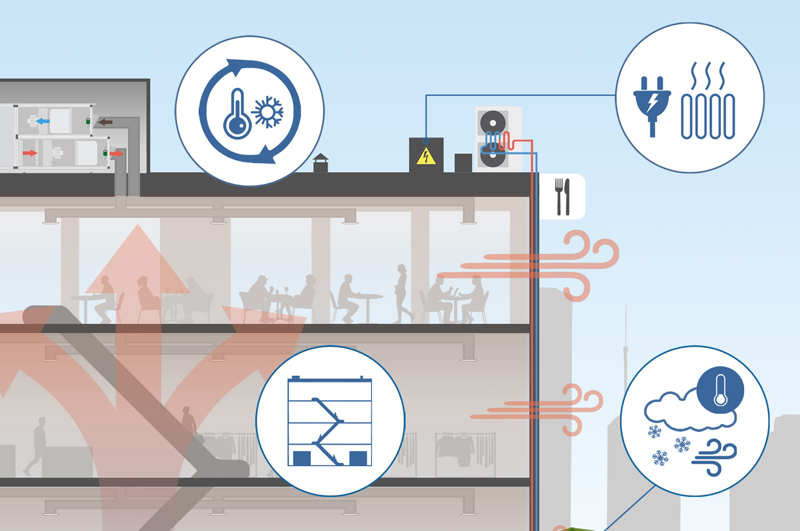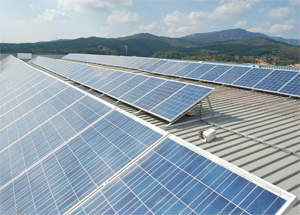Air curtains approved by ASHRAE as a valid alternative to vestibules in the entrances of commercial premises
The American Society of Heating, Refrigerating and Air-Conditioning Engineers (ASHRAE) — an international authority based in New York City that deals with regulation of the HVAC (Heating, Ventilation and Air conditioning) industry — recently approved the installation of air curtains as an efficient alternative to vestibules for the entrances of commercial premises.

The new energy standard rewards commercial air curtains
With the energy standard 90.1-2019, ASHRAE has established that the access doors of commercial buildings — except for residential buildings of limited height — can be equipped with air curtains to replace the atrium.
Based on the provisions approved by the international authority on 25 June 2019, the requirement relating to air curtains demands that such installations comply with the 220 ANSI/AMCA standard. In this way, they achieve an airflow rate of at least 122 meters per minute (400 feet per minute) at ground level. This result represents eight years of research and development.
The first step in obtaining the approval of AMCA certified air curtains to replace the vestibules was represented by the International Energy Conservation Code (IECC) on the minimum design and construction requirements for energy efficiency and the International Green Construction Code (IGCC) for new and existing commercial buildings. Subsequently, numerous studies and research on data concerning the airflow and the annual pressure differentials of buildings were necessary.
The researchers made an accurate comparative analysis to establish that in spaces with an area equal to or greater than 280 square meters, the effectiveness of the air curtains with an air jet of 122 meters per minute at ground level is better or equivalent to the presence of the vestibule.
A study directed by Professor Liangzhu Wang of the Concordia University in Montreal — an expert in airflow modulation and energy simulation — has shown that the commercial entrances protected by the air curtain allow energy savings of more than 0.3-2.2% compared to an atrium.
Effectiveness of the air curtain in replace of the vestibule
In the past, the double door atrium was essential for energy saving in commercial establishments, as it avoided the intrusion of cold or hot air inside the premises. Technological advances have brought to the utilization of sensors for the automated opening of doors.
Therefore, they minimized the key role of this architectural structure to the advantage of air curtains at the entrance doors. Besides, the effectiveness of the double door vestibule is significantly lesser when both doors are simultaneously open. Additional benefits brought by the installation of adequate air curtain concern their ability to maintain a cleaner indoor environment, limiting the infiltration of dust, fumes and pollutants, as well as insects.
Thanks to their characteristics, these installations have also been approved for industry and food distribution by the ANSI/NSF standard 37. The new energy provisions approved by ASHRAE represent an opportunity for savings also in economic terms, both for builders and property owners.

It is an acknowledgement of air curtains as effective energy-saving equipment and also a good novelty for the design of commercial use buildings. The vestibule as an entrance area is a variable space that affects the available square footage of the interior. It has the only function of disengagement and intermediary between the external and internal environment.
In the industrial sector as in the healthcare sector, in catering and in tourist facilities as in office buildings, there is the possibility of giving up the construction of vestibules or adapting existing ones. Excellent prospects for a greater spread of the air curtain as an innovation in the field of HVAC technology.







